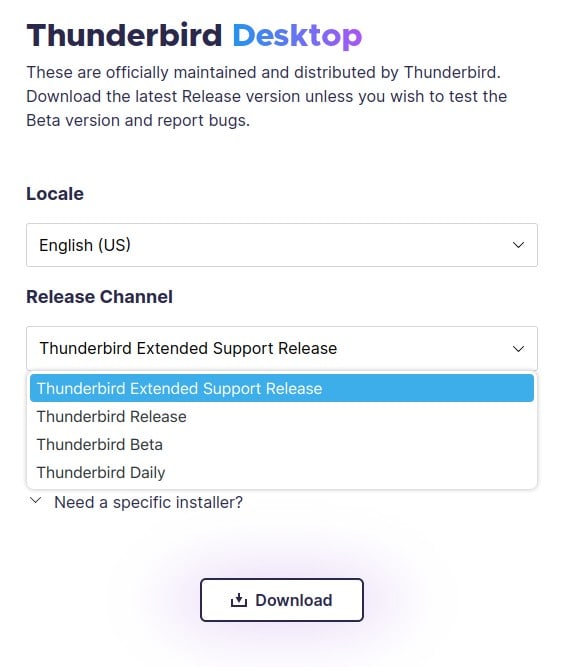Corey Bryant, Release Operations Manager at Mozilla Thunderbird, announced big changes for the most popular open-source mail client. Starting with version 136.0, scheduled for release in early March 2025, its Desktop Release channel will become the default download option.
To make things clearer, let me explain right away. If you visit its downloads page, you’ll see that Thunderbird distributes its software through four different channels:
- Thunderbird ESR (the current default channel): The extended support release is updated annually for long-term stability.
- Thunderbird Release: The official version which is updated every month.
- Thunderbird Beta: A monthly release focused on stability and polish.
- Thunderbird Daily: The cutting edge of development and testing, where new features take shape.

In short, if you click the “Download” button directly, you’ll get the ESR version by default. And that’s totally fine—it’s the best choice for users who prioritize stability over the latest features. Think of it as Ubuntu’s LTS versions, for example, or the kernel LTS releases. But now, the Thunderbird developers are looking to shake things up.
As it becomes clear, the broader goal for 2025 is to increase active installations of Thunderbird’s Release channel to at least 20% of the total user base.
As of the most recent count, it boasts only 29,543 active installations, compared to the 10,784,551 total recorded on stats.thunderbird.net (representing 0.27%). As mentioned earlier, to change this ratio, the Release channel will officially become the default option starting in March at the expense of the current ESR one.
However, the devs do not anticipate an immediate surge in users and are currently exploring additional methods to promote this channel—such as sending in-app notifications to ESR users. Additionally, to support this change and maintain stability, Thunderbird’s development team has introduced several process improvements:
- Pre-merge freezes: A four-day soft code freeze of Thunderbird Daily before merging changes into Thunderbird Beta and maintaining the existing week-long post-merge freeze for the Release channel.
- Pre-merge reviews: Risky changes can be reverted early through evaluations prior to both merges (Daily to Beta and Beta to Release channels).
- New uplift template: A more comprehensive template helps streamline and clarify the uplift process.
Finally, what’s in it for us, the end users? First and foremost, each monthly version may include new capabilities, giving users faster access to the latest improvements and tools. Monthly updates also help avoid the larger, more disruptive jumps typically associated with annual ESR upgrades.
Last but not least, users will receive timely bug fixes without waiting for patch uplifts required by the ESR channel. If you’re worried about being forced to upgrade from your stable ESR version to a newer one, don’t be! As Corey Bryant explains in this thread:
We’re not planning to force anyone away from their current channel. If a user is on the ESR channel, they will remain on that channel unless they decide to switch to a different channel.
For more information, see the official announcement in the Thunderbird’s blog.
